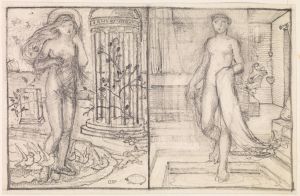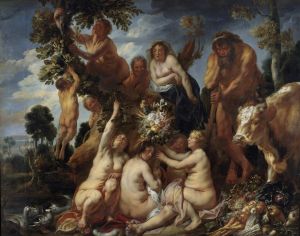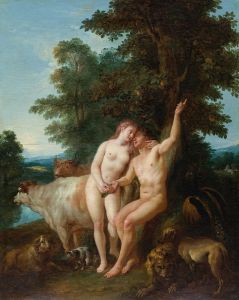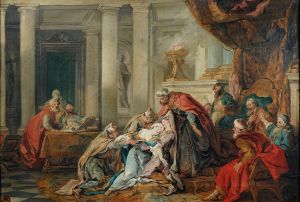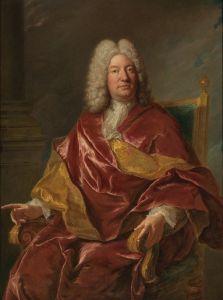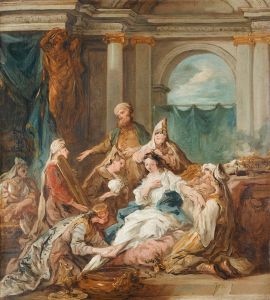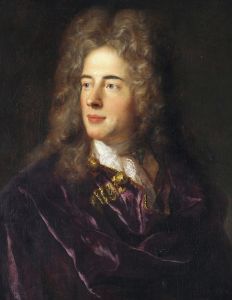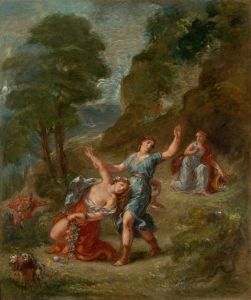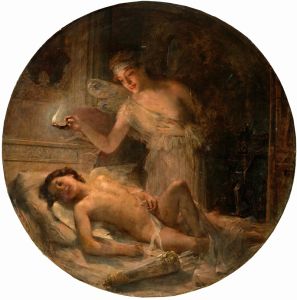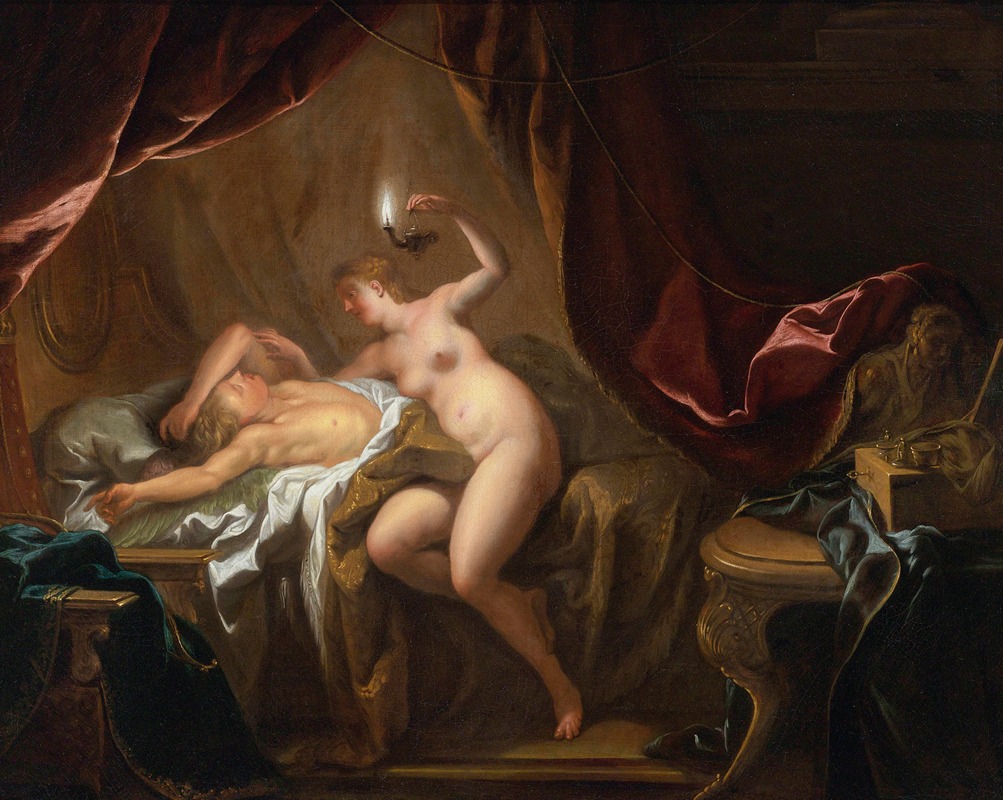
Cupid And Psyche
A hand-painted replica of Jean-François de Troy’s masterpiece Cupid And Psyche, meticulously crafted by professional artists to capture the true essence of the original. Each piece is created with museum-quality canvas and rare mineral pigments, carefully painted by experienced artists with delicate brushstrokes and rich, layered colors to perfectly recreate the texture of the original artwork. Unlike machine-printed reproductions, this hand-painted version brings the painting to life, infused with the artist’s emotions and skill in every stroke. Whether for personal collection or home decoration, it instantly elevates the artistic atmosphere of any space.
Jean-François de Troy was a prominent French Rococo painter known for his historical and mythological scenes, as well as his contributions to tapestry design. One of his notable works is "Cupid and Psyche," which depicts the famous mythological story of the love between Cupid, the god of desire, and Psyche, a mortal woman of extraordinary beauty.
The story of Cupid and Psyche originates from "The Golden Ass," a Latin novel written by Apuleius in the 2nd century AD. This tale has been a popular subject in art due to its themes of love, jealousy, and redemption. In the myth, Psyche's beauty incites the jealousy of Venus, the goddess of love, who sends her son Cupid to make Psyche fall in love with a hideous creature. However, Cupid himself falls in love with Psyche, leading to a series of trials and tribulations that ultimately result in Psyche's ascension to immortality and her union with Cupid.
Jean-François de Troy's interpretation of this myth captures the romantic and dramatic essence of the story. Although specific details about the painting's creation, such as its exact date and current location, are not well-documented, de Troy's style is evident in the composition and execution. His work often features dynamic movement, rich colors, and a keen attention to detail, all of which are likely present in "Cupid and Psyche."
De Troy was born in Paris in 1679 into a family of artists. He studied under his father, François de Troy, and later at the French Academy in Rome, where he was influenced by the Italian Baroque style. This influence is reflected in his use of dramatic lighting and expressive figures. Throughout his career, de Troy was known for his ability to convey complex narratives through his paintings, making him a sought-after artist for both private patrons and royal commissions.
In addition to his mythological scenes, de Troy was also renowned for his tapestry designs. He served as the director of the Gobelins Manufactory, where he oversaw the production of tapestries that depicted various historical and mythological subjects. His work in this field further solidified his reputation as a master of narrative art.
While "Cupid and Psyche" by Jean-François de Troy may not be as widely recognized as some other interpretations of the myth, it remains an important example of Rococo art and the enduring appeal of classical mythology in European art. De Troy's ability to blend narrative depth with visual elegance makes his work a significant contribution to the artistic landscape of the 18th century.
Overall, Jean-François de Troy's "Cupid and Psyche" exemplifies the Rococo fascination with love and mythology, capturing the timeless story of Cupid and Psyche with the artist's characteristic flair for drama and beauty.






